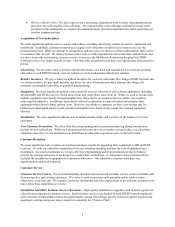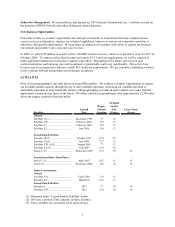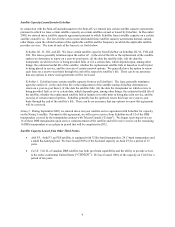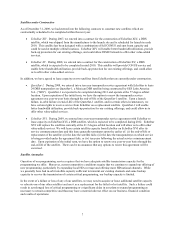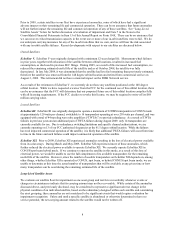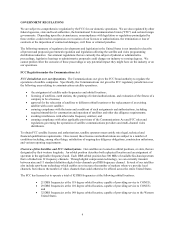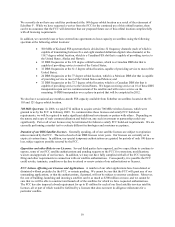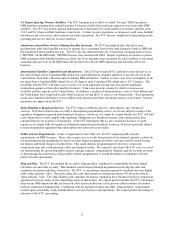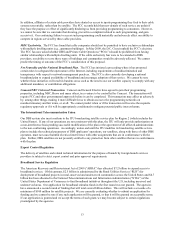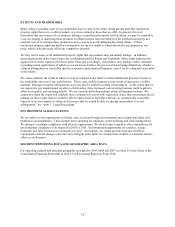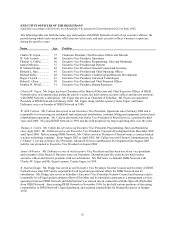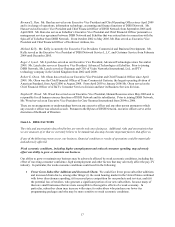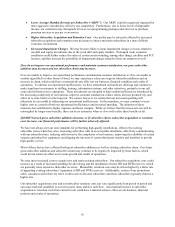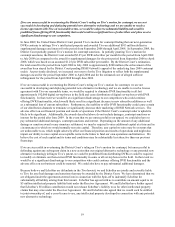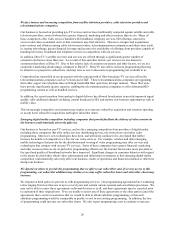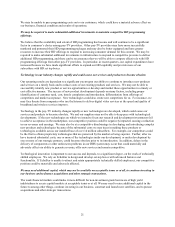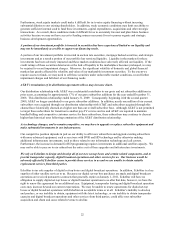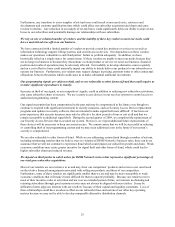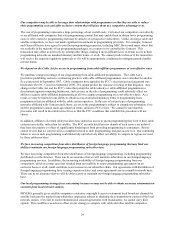Dish Network 2009 Annual Report Download - page 24
Download and view the complete annual report
Please find page 24 of the 2009 Dish Network annual report below. You can navigate through the pages in the report by either clicking on the pages listed below, or by using the keyword search tool below to find specific information within the annual report. 14
PATENTS AND TRADEMARKS
Many entities, including some of our competitors, have or may in the future obtain patents and other intellectual
property rights that cover or affect products or services related to those that we offer. In general, if a court
determines that one or more of our products infringes on intellectual property held by others, we may be required to
cease developing or marketing those products, to obtain licenses from the holders of the intellectual property at a
material cost, or to redesign those products in such a way as to avoid infringing the patent claims. If those
intellectual property rights are held by a competitor, we may be unable to obtain the intellectual property at any
price, which could adversely affect our competitive position.
We may not be aware of all intellectual property rights that our products may potentially infringe. In addition,
patent applications in the United States are confidential until the Patent and Trademark Office either publishes the
application or issues a patent (whichever arises first) and, accordingly, our products may infringe claims contained
in pending patent applications of which we are not aware. Further, the process of determining definitively whether a
claim of infringement is valid often involves expensive and protracted litigation, even if we are ultimately successful
on the merits.
We cannot estimate the extent to which we may be required in the future to obtain intellectual property licenses or
the availability and cost of any such licenses. Those costs, and their impact on our results of operations, could be
material. Damages in patent infringement cases may also be trebled in certain circumstances. To the extent that we
are required to pay unanticipated royalties to third parties, these increased costs of doing business could negatively
affect our liquidity and operating results. We are currently defending multiple patent infringement actions. We
cannot be certain the courts will conclude these companies do not own the rights they claim, that our products do not
infringe on these rights, that we would be able to obtain licenses from these persons on commercially reasonable
terms or, if we were unable to obtain such licenses, that we would be able to redesign our products to avoid
infringement. See “Item 3. Legal Proceedings.”
ENVIRONMENTAL REGULATIONS
We are subject to the requirements of federal, state, local and foreign environmental and occupational safety and
health laws and regulations. These include laws regulating air emissions, water discharge and waste management.
We attempt to maintain compliance with all such requirements. We do not expect capital or other expenditures for
environmental compliance to be material in 2010 or 2011. Environmental requirements are complex, change
frequently and have become more stringent over time. Accordingly, we cannot provide assurance that these
requirements will not change or become more stringent in the future in a manner that could have a material adverse
effect on our business.
SEGMENT REPORTING DATA AND GEOGRAPHIC AREA DATA
For operating segment and principal geographic area data for 2009, 2008 and 2007 see Note 15 in the Notes to the
Consolidated Financial Statements in Item 15 of this Annual Report on Form 10-K.


